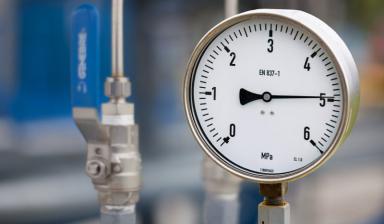Guide to oil boiler types, positioning and flues

Which type of oil boiler is best for my circumstances? Where can I locate it? What are the flue requirements?
Oil boilers are available in combi, system and heat only models. With internal and external boilers available and ‘balanced flue’ systems as standard there is a great deal of flexibility for locating the boiler. The plumes from oil boilers can be significant however and an important consideration is where the flue terminates. In this guide we explain the types of oil boiler and location considerations. For boiler prices by type try our Guide to oil boiler prices, warranties and efficiencies.
Oil boiler by type
Combi oil boilers
Oil combination boilers provide heating and hot water from a single unit. Oil combis generally incorporate a heat store to improve performance and controls to regulate the hot water. Heat store combis are fitted on fully pumped systems with full boiler and controls interlock.
Heat only oil boilers
Heat only boilers are available in open vented and sealed system models (for more on trying our Guide to open vented and sealed systems). Heat only boilers work with a hot water cylinder.
System oil boilers
Systems boilers are the same as heat only boilers with additional components integral to the boiler, i.e. an expansion vessel and circulating pump. System boilers only work on sealed system and should be installed on a fully pumped system.
Changing boiler type
If you are installing a new boiler now be the time to change boiler type. Many people move from a heat only boiler to a system or combi boiler. There are clear benefits if your water pressure is good. For a system boiler more parts are integral to the boiler and therefore covered under the manufacturer’s warranty. A combi boiler even more so as the hot water components are integral; it is also space saving. If you are a household with multiple bathrooms and teenage children then retaining your system or heat only boiler is probably the best option, providing the tank is big enough to cope. In all cases you may wish to consider an external boiler to free up space.
A note on condensing boilers
Oil boilers are now available in condensing models. Condensing boilers are cheaper to run and much more efficient, emitting less carbon monoxide than non-condensing boilers. High efficiencies are achieved by adding more heat exchange area, either via an additional heat exchanger or a main heat exchanger with more surface area. The additional surface area extracts more heat from the combustion process and reduces waste heat into the atmosphere. In order for the boiler to operate in condensing mode however the temperature of the water on its way back to the boiler must be around 50 degrees.
Locating the boiler
The best location for your new oil boiler will be determined by many factors. How much space you have to give, existing pipework and electrical points and the position of the flue. If you are replacing your old boiler with a new condensing oil boiler, then a few things will definitely have to change:
Open flue to balanced flue
Most new oil boilers will use a balanced flue as standard as they offer greater versatility in siting the boiler. Balanced flues do not require additional ventilation for the appliance to operate correctly as they are designed to carry fresh air in form outside to facilitate combustion. They do create large plumes of harmless water vapour however and so the termination point must be carefully selected (see below).
Condense pipes
Modern oil condensing boilers require a discharge pipe to remove vapours that condense in the flue and run back down in to boiler. The pipe will discharge to a main drain or, if a drain not nearby, a ‘soakaway’, which is a shingle drain dug into the ground. This will be undertaken by the boiler installer as part of the installation.
Flue considerations
The position of flue terminals (i.e. where the flue discharges through a wall or roof) is strictly regulated. Oil fired boiler flues must not be terminated beneath windows or where higher parts of the building will affect the draw of the flue or chimney.
Condensing flue boilers emit large plumes of water vapour. This is a sign that the boiler is operating properly and the vapour itself is harmless, however, it can cause a nuisance which can lead to legal enforcement. Condensing flue boilers need to be located where air can pass across them freely but do not push the vapour into an opening or neighbouring property.
Cooling water vapour can also corrode nearby metal objects and form ice on pathways and drives in freezing conditions. Flue termination must also consider the effects of freezing water layers over nearby options.
Guidance for terminating a flue
- Keep flue terminals at least 1m horizontally from openings (windows, doors, vents) in the building
- Do not install directly below a window or next to a door
- Keep at least 1m of distance between the flue terminal and ventilated soffits and eaves
- Keep flue terminals at least 2.5m away from surfaces, boundaries, driveways or pathways facing the terminal
Guidance for flue runs
Balanced flue will have a maximum length which will be specified by the boiler manufacturer. The ‘effective’ length will be reduced every time a bend is added. The effective length stated by the manufacturer can vary from 2m – 6m horizontally and 6m – 12m vertically, subject to the following adjustments:
- For every bend the length is reduced. For example, the manufacturer may state that the maximum length of the flue is 6m horizontally. However, that length might be reduced by 1m for every 90 degree bend and 0.5m for every 45 degree bend. In other words, a 6m length with turn into 4m if two 90 degree bends are included.
- Provision must be left for the terminal length and the starter flue section directly off the boiler.
For condensing boilers, all horizontal sections of flue must rise gradually (52mm in every 1000mm) to ensure the condensate flows back into the boiler for safe disposal via the condensate waste pipe.
Flues in chimney breast
Flues and chimneys are often interchangeable terms. A flue is a rigid metal length or flexible liner that connects directly to the boiler and terminates externally. A chimney is a masonry, concrete or pumice structure into which a fire or boiler might discharge. It is still possible for oil boilers to discharge via a chimney breast, although the boiler is not likely to be a condensing model. Flue gas temperatures for condensing model are much lower so it is difficult for the emissions to rise in an uninsulated chimney, even with a flue liner. All rigid condensing boiler flues are insulted to facilitate their process.
Hearths
Where the bottom of an oil boiler exceeds a temperature greater than 100 degrees, it must be positioned on a ‘constructional hearth’ of at least 150mm thick concrete. This does not pose a problem for any boiler on a concrete floor or for a lot of modern boilers, but it is best to check the manufacturer’s instructions. External boilers should be located on a hard stand to prevent corrosion to the case.


